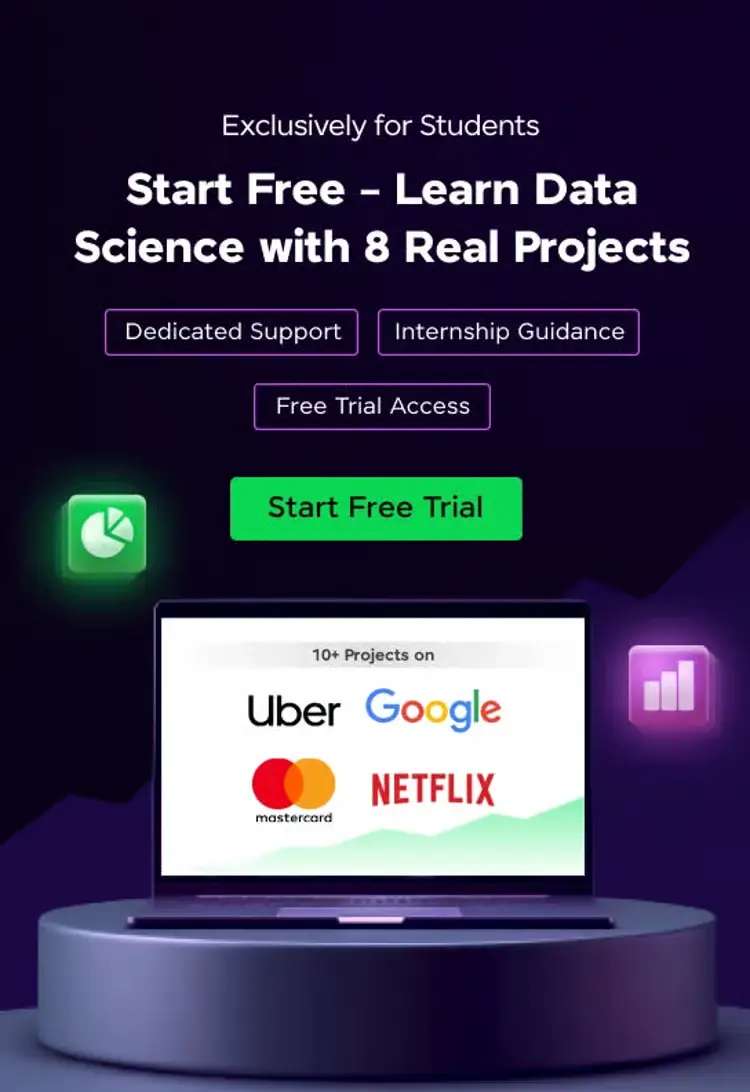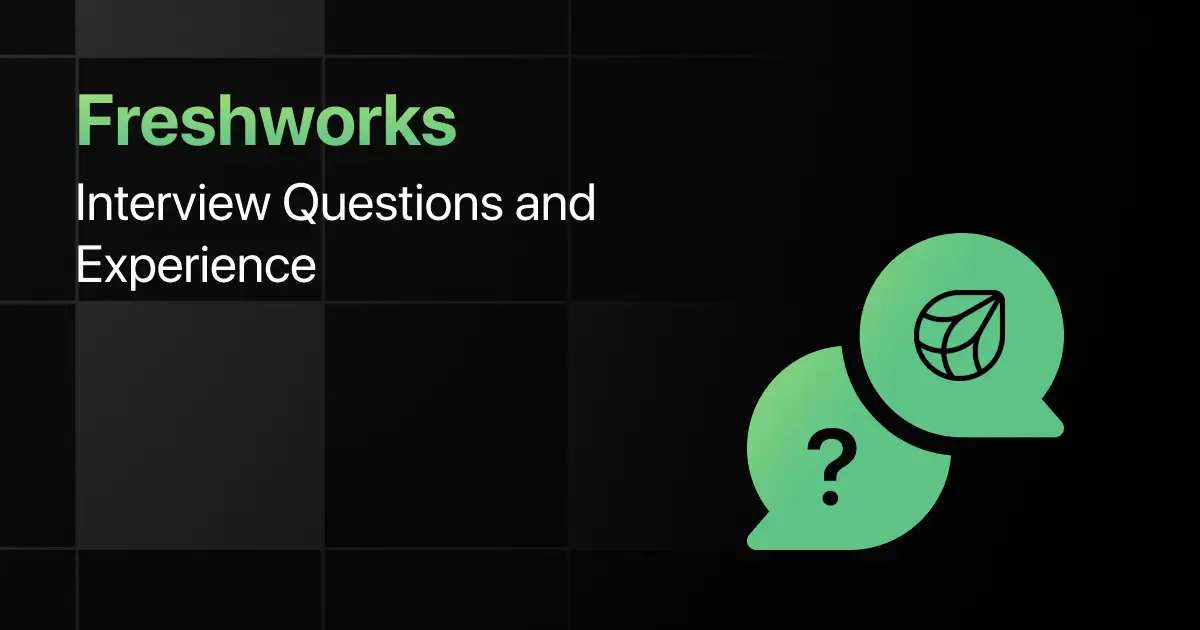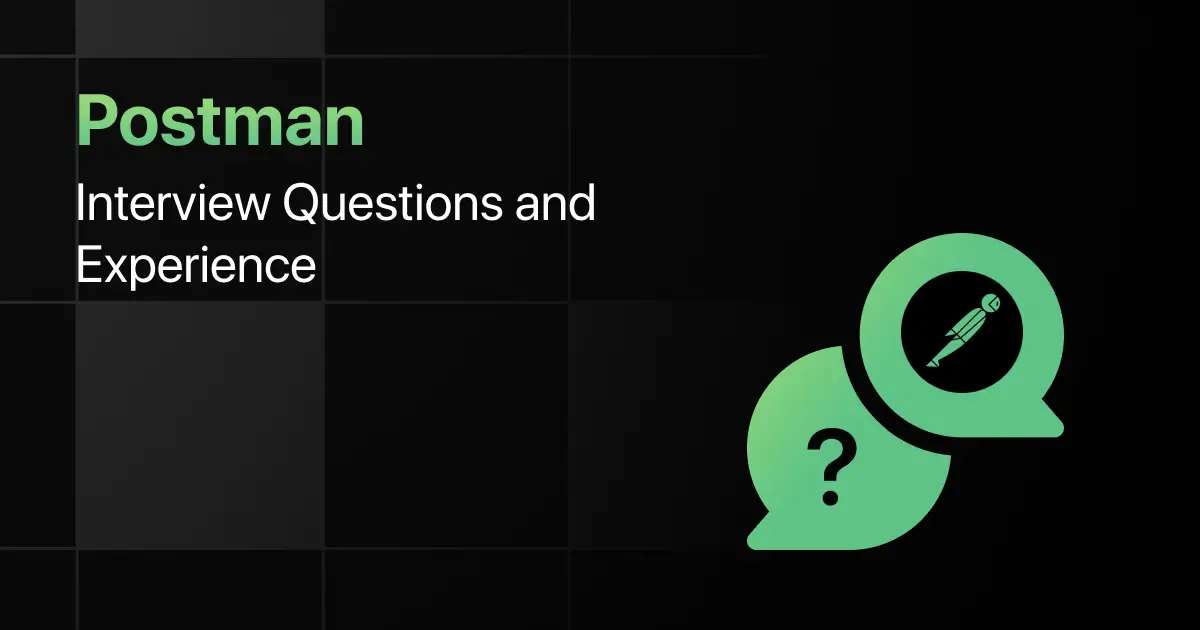Salesforce Interview Questions and Experience
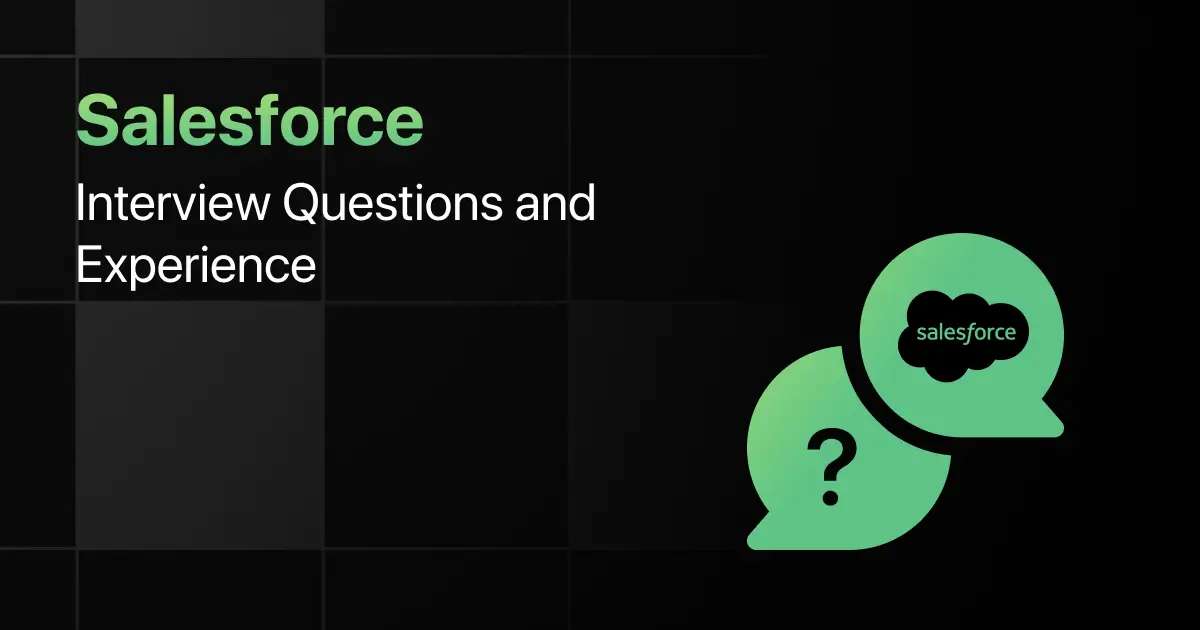
Have you ever thought about what it takes to clear a Salesforce interview? Many candidates know CRM basics but find the real interview process challenging.
Salesforce interviews often test coding in Apex, knowledge of CRM features, and understanding of system design. You may also face scenario-based problem solving.
In this blog, you will learn about Salesforce’s hiring process, common interview questions, real candidate experiences, and preparation tips to guide your interview journey.
Salesforce Hiring Process – Overview
Here’s a quick overview of Salesforce’s hiring process:
| Category | Details |
|---|---|
| Eligibility | Both freshers and experienced candidates. Preferred degrees: B.E/B.Tech/BS in CS or related field. Certifications (Salesforce Certified Admin/Developer) are a plus |
| Rounds | Usually 3–5 rounds: application + resume screen → technical interview(s) (coding/Apex/CRM logic) → product/design/CRM scenario → behavioral / HR. |
| Job Roles Offered | Salesforce Developer (Apex / Lightning), Salesforce Admin, Consultant, Architect, QA/Support roles in CRM ecosystem. |
| Salary Range | Fresher (Developer/Admin): ~ ₹4.5-10 LPA in India. Experienced (Mid-Senior Developer/Technical Lead): ~ ₹15-30 LPA+ depending on level & certifications. (Glassdoor, AmbitionBox) |
| Apply Link | Apply Now |
Top Salesforce Interview Questions
Salesforce interviews test your understanding of CRM fundamentals, Apex programming, Lightning framework, and problem-solving skills. Below are some of the most common technical questions asked in Salesforce interviews.
1. Technical Questions
- What is the difference between a Role and a Profile in Salesforce?
A Profile defines object-level and field-level permissions. A Role controls record visibility through the role hierarchy. - Explain Governor Limits in Salesforce. Why are they important?
Governor Limits enforce multi-tenant efficiency. For example, SOQL queries are capped, and exceeding limits causes runtime exceptions. - What is a Trigger in Salesforce?
A trigger is Apex code that executes automatically before or after DML operations such as insert, update, or delete. - What is the difference between SOQL and SOSL?
SOQL retrieves records from a single object or related objects. SOSL searches across multiple objects using text-based queries. - What is the difference between With Sharing and Without Sharing keywords?
“With Sharing” enforces record-sharing rules. “Without Sharing” ignores them and allows broader data access. - What is a Lightning Web Component (LWC)?
LWC is a modern UI framework built with JavaScript, HTML, and CSS, offering faster performance than Aura Components. - Explain a Batch Apex job.
Batch Apex processes large volumes of records asynchronously in manageable chunks, ideal for millions of records. - What are Validation Rules in Salesforce?
Validation rules enforce data quality by restricting invalid values during record creation or updates. - Explain the difference between Standard Objects and Custom Objects.
Standard objects like Account and Contact come with Salesforce. Custom objects are created by users for unique business needs. - What are Test Classes in Salesforce and why are they required?
Test classes validate Apex code and ensure at least 75% coverage before deploying to production. - How do you implement a Many-to-Many relationship in Salesforce?
By creating a Junction Object that links two Master-Detail relationships. - What is the difference between Workflow Rules and Process Builder?
Workflow rules automate simple actions, while Process Builder allows multi-step automation with complex logic. - Explain the concept of Queueable Apex.
Queueable Apex supports asynchronous processing with job chaining, more flexible than @future methods. - What is the use of a Sandbox in Salesforce?
A Sandbox is a replica of production used for testing, development, or training without affecting live data. - How is Security implemented in Salesforce?
Security is applied at object, field, and record levels using profiles, permission sets, role hierarchy, and sharing rules.
2. Role-Based Questions
For Freshers
- What are the different editions of Salesforce?
Essentials, Professional, Enterprise, and Unlimited — each offers varying levels of features and customization. - Why do you want to join Salesforce?
Because Salesforce is a global leader in CRM, known for innovation and cloud technologies, and it offers great learning opportunities for freshers. - What do you know about Salesforce’s core products?
Sales Cloud for sales automation, Service Cloud for customer support, Marketing Cloud for campaigns, and Commerce Cloud for e-commerce. - How do you prepare yourself to learn Salesforce quickly as a beginner?
By completing Salesforce Trailhead modules, practicing hands-on with developer orgs, and focusing on core CRM concepts.
For Salesforce Developers
- What is the difference between Apex Class and Apex Trigger?
An Apex Class is reusable code defining logic. A Trigger executes automatically on specific DML events on objects. - How do you handle bulk data operations in Apex?
Use bulkified triggers, Batch Apex, Queueable Apex, or the Data Loader to process large volumes efficiently within governor limits. - What is the difference between Aura and LWC?
Aura Components use Salesforce’s proprietary framework. LWC leverages modern JavaScript, offering better performance and standardization.
For Salesforce Administrators
- How do you control record-level access in Salesforce?
Record access is controlled through role hierarchy, sharing rules, manual sharing, and organization-wide defaults. - What is the difference between Permission Sets and Profiles?
Profiles define base user permissions. Permission sets extend access without changing the profile. - How do you use Reports and Dashboards in Salesforce?
Reports summarize records based on filters. Dashboards visually represent reports, helping managers track KPIs.
For Salesforce Analysts/Consultants
- How do you gather requirements for a Salesforce project?
Use stakeholder interviews, process mapping, and user stories. Translate requirements into Salesforce features like objects, fields, and workflows. - How do you measure ROI of a Salesforce implementation?
Track metrics like lead conversion rate, sales cycle duration, customer retention, and user adoption before and after implementation. - How do you prioritize features when clients request multiple changes?
By evaluating business impact, feasibility, cost, and alignment with project goals, then using frameworks like MoSCoW (Must, Should, Could, Won’t).
For Salesforce Managers/Architects
- How do you lead a Salesforce project with multiple teams?
Break down milestones, assign clear responsibilities, use agile methodology, and maintain transparent communication across admin, developer, and business teams. - How do you ensure Salesforce data quality over time?
Implement validation rules, duplicate management, scheduled audits, and training for end users. - How do you handle Salesforce integration with external systems?
Use REST/SOAP APIs, middleware tools (MuleSoft, Informatica), or AppExchange connectors for seamless data exchange. - What strategy would you use for user adoption in a new Salesforce rollout?
Provide training sessions, create user-friendly dashboards, offer quick support, and showcase benefits to encourage adoption.
3. Behavioral Questions
- Tell me about a time when you had to collaborate with a cross-functional team.
I worked with developers and business analysts to design a Salesforce solution. Clear communication and shared updates ensured timely delivery. - How do you handle situations where project requirements keep changing?
I confirm priorities with stakeholders, document changes, and adjust timelines. I also communicate impacts clearly to the team and management. - Describe a challenge you faced in a Salesforce project and how you solved it.
We faced duplicate records affecting reports. I implemented duplicate management rules, cleaned existing data, and trained users on best practices. - How do you manage conflicts within a team?
I listen to both perspectives, encourage constructive discussion, and focus on shared project goals to reach a balanced resolution. - Salesforce emphasizes Customer Success. How do you apply this value?
I always prioritize delivering value to the end customer, ensuring that any customization or workflow enhances their experience and efficiency. - How do you manage tight deadlines while ensuring quality?
I break down tasks, set priorities, and use agile methods to deliver iterations. I balance speed with regular quality checks. - Tell me about a time when you influenced a decision without direct authority.
I proposed adopting LWC for performance gains. By showing data and benefits, I convinced the team and managers to approve it. - How do you ensure clear communication when explaining technical details to non-technical stakeholders?
I simplify terminology, use diagrams, and give examples related to business outcomes, ensuring the message is understood.
Salesforce Interview Experiences
1. Associate Member of Technical Staff Interview Experience (Fresher)
This interview experience is from Tharun Kumar Reddy Polu, who interviewed for an Associate Member of Technical Staff (AMTS) new grad role at Salesforce. The process included an online assessment and three virtual rounds, followed by compensation discussion and offer.
Candidate Background
New grad, University of Maryland, College Park. Projects and internships aligned to software engineering. Prepared with LeetCode, Grind 75, and Salesforce tagged questions. Comfortable with Java and Python.
Interview Process They Faced
- Online Assessment: HackerRank, 70 minutes, 2 coding questions.
- Round 1 (Coding): 60 minutes, Java required. Binary tree boundary style extraction with de-duplication and edge cases.
- Round 2 (Coding): 60 minutes, Python. Q1 custom stack with O(1) special ops, Q2 graph style puzzle with approach and tradeoffs.
- Round 3 (Techno-Managerial / Behavioral): 45 minutes with Director. Project deep dive, light system design discussion, values alignment, standard behavioral questions.
- Post Rounds: Compensation and benefits discussion. Offer released.
Questions Asked
- OA: Circular traversal minimum steps; make sequence nearly increasing via deletions using LIS logic.
- Coding R1: Binary tree boundary style traversal on unbalanced trees with no duplicates, write tree scaffolding and tests in Java.
- Coding R2: Design a custom stack supporting constant time special ops with duplicates; open ended graph problem focusing on BFS vs DFS choice and complexity.
Behavioral / Design: System design style discussion on past projects, scalability, tradeoffs, and Why Salesforce.
Outcome & Difficulty Level: Selected for AMTS in San Francisco with early start. Difficulty: Moderate to Hard. Emphasis on data structures, robustness, test cases, and clear reasoning.
2. Software Engineering Role Interview Experience (Experienced)
This interview experience is from an experienced candidate who interviewed for a software engineering role at Salesforce. The process included five rounds covering algorithms, system design, and hiring manager evaluation over multiple sessions.
Candidate Background
Experienced engineer with strong skills in trees, graphs, BFS, and system design concepts. Preparing over several years with renewed attempt after an earlier try.
Interview Process They Faced
- Round 1 (N-ary Tree Case): Company leader hierarchy modeled as N-ary tree. Build violator lists per leader with missing node handling.
- Round 2 (Binary Trees): Boundary traversal, vertical order traversal, top view.
- Round 3 (BFS Problem): Snakes and Ladders shortest path, edge cases and efficiency.
- Round 4 (System Design): Start with hashmap internals, collision strategy, then scale to distributed cache design, partitioning, replication, failover, and recovery.
- Round 5 (Hiring Manager): Behavioral and domain focus with security questions and project impact.
Questions Asked
- Trees: N-ary aggregation using post order; binary tree boundary, vertical order, top view.
- Graphs: BFS for shortest path on game board with edge cases.
- Design: Hashmap internals to distributed cache design with scaling, consistency, and DR.
- Hiring Manager: Most challenging task, conflict resolution, security basics and applied security in distributed systems.
Outcome & Difficulty Level: Not selected. Difficulty: Moderate to Hard. Strong performance in algorithms and system design, gap noted in security depth and impact storytelling in the hiring manager round.
Preparation Tips for Salesforce Interviews
Strong preparation in both Salesforce technical skills and scenario-based problem-solving is essential for clearing interviews successfully.
- Revise Fundamentals: Go through Salesforce basics like objects, fields, workflows, and security. Understand CRM concepts thoroughly.
- Practice Apex: Strengthen Apex programming and triggers. Be prepared to handle bulk operations within governor limits.
- Learn LWC & Visualforce: Gain hands-on knowledge of Lightning Web Components and when to use Visualforce for custom UI needs.
- Focus on Integrations: Review Salesforce APIs and integration approaches with third-party tools. Many roles test external system connectivity knowledge.
- Work on Admin Skills: Practice setting up users, roles, profiles, and permission sets. Understand data sharing and validation rules.
- Review Reports & Dashboards: Be ready to create meaningful reports and dashboards for business use cases.
- Prepare Behavioral Stories: Use STAR (Situation, Task, Action, Result) to explain teamwork, leadership, and customer-focused examples.
- Mock Interviews: Simulate interviews to improve communication and time management under pressure.
Final Words
Salesforce interviews assess both technical expertise and business problem-solving skills. By practicing Apex, Lightning, and CRM concepts alongside communication and teamwork, you can approach the process with confidence.
Explore More for
- Amazon
- Oracle
- Microsoft
- IBM
- Adobe
- Flipkart
- Apple
- Uber
- Meesho
- Zomato
- Swiggy
- Phonepe
- Zoho
- Postman
- Freshworks
- Paytm
- Darwinbox
FAQs
Common Salesforce interview questions cover Apex, triggers, LWC, governor limits, SOQL vs SOSL, workflows, and real-world CRM scenarios.
Yes, they can be challenging, but focusing on Salesforce basics, Apex coding, and admin concepts makes them manageable.
The process usually takes two to four weeks depending on role and location.
Candidates should focus on Apex, LWC, Salesforce administration, CRM workflows, and API integrations.
Common mistakes include ignoring governor limits, weak Apex fundamentals, and not preparing real project scenarios.
Typically three to five rounds, including technical, scenario-based, and HR rounds.
Yes, freshers face more fundamental and admin-level questions, while experienced candidates are tested on system design and integrations.
The best way to prepare is by practicing coding, revising concepts, and using resources on PlacementPreparation.io for guidance.
Related Posts
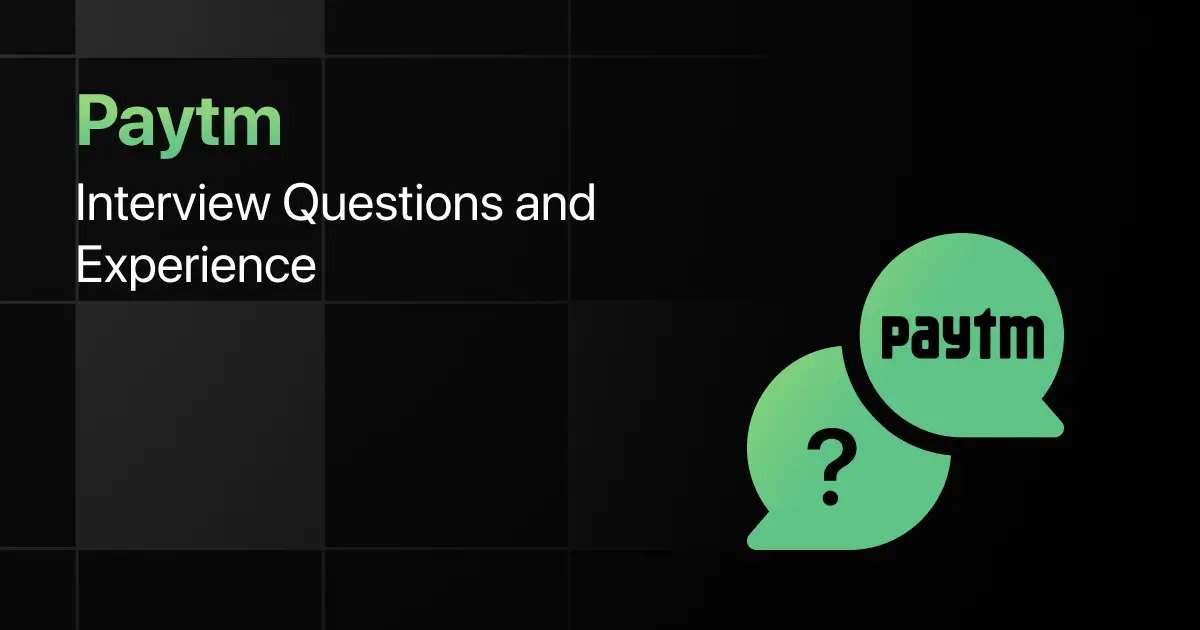

Paytm Interview Questions and Experience
Preparing for a Paytm interview requires a clear understanding of the company’s hiring process, the type of questions asked, and …
Warning: Undefined variable $post_id in /var/www/wordpress/wp-content/themes/placementpreparation/template-parts/popup-zenlite.php on line 1050


